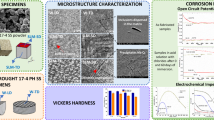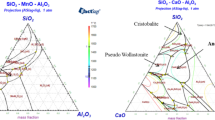Conclusions
-
1.
Nitriding of maraging steel N18K9M5T results in the formation of a case that is not brittle and is firmly bonded to the base metal, with a depth of 0.2–0.25 mm and a high surface hardness (up to HV 900).
-
2.
Nitriding greatly increases the wear resistance of the steel and also the fatigue limit.
-
3.
After aging and nitriding, steel N18K9M5T has a high corrosion resistance in artificial sea water.
-
4.
To obtain a diffusion layer of sufficient depth with a high surface hardness, nitriding should be conducted in ammonia at 450° for 48 h and at 500° for 24h. In this case nitriding is combined with the aging process.
Similar content being viewed by others
Literature cited
A. J. Haynes, in: High-Alloy Steels [Russian translation], Metallurgizdat, Moscow (1969).
G. Anthony, Metal Progress,92, No. 1 (1967).
M. D. Perkas, Metal. i Term. Obrabotka Metal., No. 6 (1968).
S. S. Ryzhak et al., Metal. i Term. Obrabotka Metal., No. 6 (1968).
W. Steven, in: High-Alloy Steels [Russian translation], Metallurgiya, Moscow (1969).
Additional information
Moscow Highway Institute. Translated from Metallovedenie i Termicheskaya Obrabotka Metallov, No. 4, pp. 22–25, April, 1971.
Rights and permissions
About this article
Cite this article
Tsyrlin, É.S. Nitriding of maraging steel N18K9M5T. Met Sci Heat Treat 13, 289–292 (1971). https://doi.org/10.1007/BF00661338
Issue Date:
DOI: https://doi.org/10.1007/BF00661338




